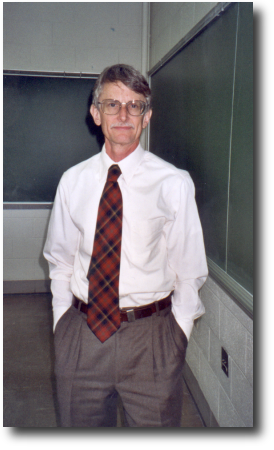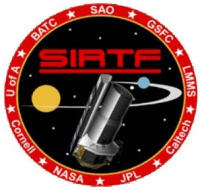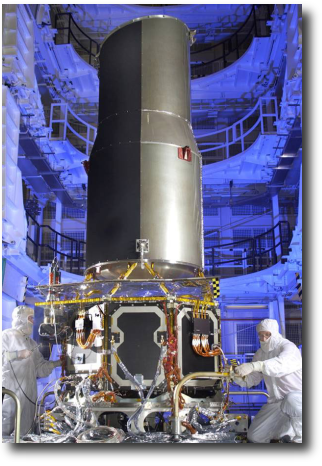(This article is available in audio

When the first telescopes were put into space, astronomy was changed
forever. Such a telescope can avoid the natural limitations imposed by
the Earth's atmosphere. Thus, each new space telescope would bring a new
quantum leap in our understanding of the Universe. The Hubble Space Telescope
is probably the most famous example, but there is a whole fleet of space
telescopes up there, observing various types of light: gamma rays, X-rays,
ultraviolet, visible, infrared, microwaves, etc. Some of them observe the
Sun, or travel far away to observe other planets from close distance. Of
course, many telescopes observe the Earth, for scientific, commercial,
or military purposes. In addition to existing space telescopes, there are
new ones planned for launch in the near future.
Telescopes on the ground have also reached impressive advancements, with some of them being able to make images sharper than the Hubble telescope. In order to make all these achievements, modern astronomy is pushing the limits of state of the art technology. The yields for society are far more than just astronomical discoveries. This technology finds its way soon to commercial applications. For example, an astronomical X-ray detector does not care if an X-ray photon comes from a distant star or an X-ray machine for your medical examination. It is not surprising, then, that the technological advancement of a country can be also measured by its support of astronomy.
 One of
the space telescopes expected to be in space within a year is the Space Infrared
Telescope Facility (SIRTF, sirtf.caltech.edu). Astronomers hope
that it will bring yet another astronomical breakthrough. We talked about
SIRTF and these expectations with Dr. Neal J.
Evans II from the University
of Texas at Austin, a professor at the Department of Astronomy and one
of the well-known names in the astronomical community.
He is also leading one of the teams that will obtain important
early large-scale observations with SIRTF.
One of
the space telescopes expected to be in space within a year is the Space Infrared
Telescope Facility (SIRTF, sirtf.caltech.edu). Astronomers hope
that it will bring yet another astronomical breakthrough. We talked about
SIRTF and these expectations with Dr. Neal J.
Evans II from the University
of Texas at Austin, a professor at the Department of Astronomy and one
of the well-known names in the astronomical community.
He is also leading one of the teams that will obtain important
early large-scale observations with SIRTF.
We asked Dr. Evans to tell us more about SIRTF:
"SIRTF will go into the orbit essentially following the Earth, but
drifting behind the Earth. The telescope will be a little bit less than
one meter in diameter. The special feature of SIRTF, compared to other
telescopes in space, is that it will be cooled to very, very low temperatures,
close to absolute zero. The purpose of this is to make the telescope itself
very dark, so that it does not interfere with the infrared radiation from
the objects we want to look at. If you left it with the normal temperature,
even out in space, it would itself emit much infrared radiation, which
would make it much less capable of detecting the infrared radiation from
astronomical objects. The importance of SIRTF for astronomy is that it
will open up a tremendously more sensitive capability able to detect weak
sources of infrared radiation. Many of the objects in the Universe are
primarily manifested by their infrared radiation, so it will give us a
very important new look at the star, planet, and galaxy formation."

Integration of the SIRTF telescope with the spacecraft at Lockheed Martin in Sunnyvale, California. |
"Our project is to look at nearby regions where stars are forming. These are always hidden in clouds of dust, so the ability to see what is going on with visible light is very small. We use the infrared sensitivity of SIRTF to probe deep into these regions of star formation and study the process from its very beginnings in a very cold cloud of dust and molecules, through the point where a central star begins to form, surrounded by a rotating disk. In this disk, we believe, is the place where planets will form. We do not have direct evidence of that, but if we study the disk and we look at how that disk changes as we look at older and older objects, we will be able to have some constraints on the capabilities for planet formation. So, one of the strong aspects of our program is to trace this evolution of the disks through the stage in which the
stars are getting older and older. They are still young stars by most standards, but we will study, as age goes on, what happens to these different disks and how quickly does the disk material disappear. The presumption will be that the disk material is going into the planets. We will not be able to prove that, but we will be having a constraint on how long you have in order to make planets, and this will be important information for people who study theoretically how planets form out of these disks. We can also study the nature of the material in the disks using some spectroscopy. By doing that we learn something about the nature of the dust grains, are they surrounded by coatings of ice, is the material amorphous or is it crystalline, and things like that. We will be able to see how that changes as time goes on as well."
What is your opinion about the current status of astronomy in general
and what can be expected in the future.
"The current status of astronomy is extremely exciting. We have a number
of new capabilities that are going to be coming available in the next decade
or so. They are going to tremendously enhance our ability to study the
Universe especially at wavelengths that are not visible light, so things
like SIRTF, follow up missions that will probe further and at even longer
wavelengths. There is a mission in Europe called Herschel (http://astro.esa.int/herschel/),
and there is a mission that will be build on the ground, actually, at a
high site in Chile and it will work at so called sub-millimeter wavelengths.
These will provide tremendous insights into the problem I discussed before,
about the planet formation. We should with this project in Chile, actually
be able to look at the process of planet formation. But, they will also
probe very far back into the history of the Universe and give us a chance
to see the very earliest formations of stars and galaxies. For a young
person thinking about a career now, I think it is a wonderful time to get
into astronomy because the opportunities are going to be very, very exciting."